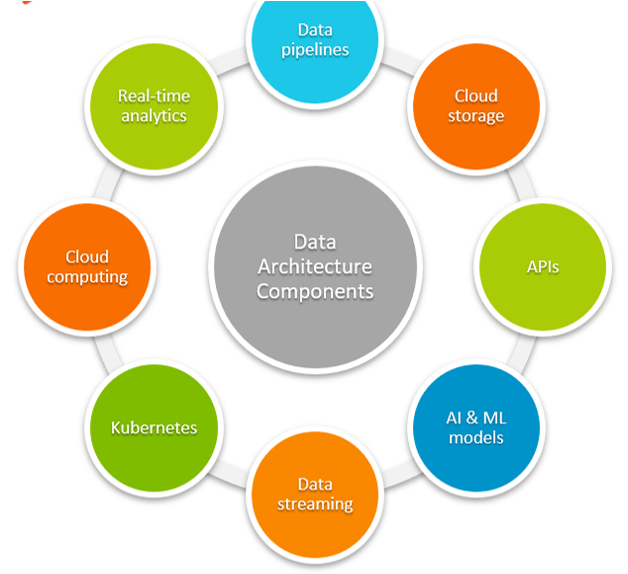
Data architecture supports agility.

Data architecture is a framework for how IT infrastructure supports your data strategy. The goal of any data architecture is to show the company’s infrastructure how data is acquired, transported, stored, queried, and secured.
A data architecture is the foundation of any data strategy. It is the “how” when implementing a data strategy.
Data architecture supports agility.
Agility allows your company to adapt quickly to the business environment and industry. A particular kind of data architecture can actually enable agility, so you can meet these business demands.
Data architecture is critical to the success of a business (and why we’ve written extensively on each data component). The world is jumping aboard this framework. The writings and how-to’s and best practices are there to share the architecture and help get organizations moving towards it.
What is data architecture?
Data architectures will define a company’s livelihood. If a company were a chess piece, the data architecture defines the moves the company can make on the board. A primitive architecture allows your company to move like a pawn. An advanced architecture can make that pawn a queen.
Picture these different data architectures:
- Storing a file as a .csv on a local hard drive and reading the file into Tableau on a person’s computer for analysis is a very simple kind of data architecture.
- Streaming data from a set of point-of-sale registers to accounting is another kind of architecture.
The data architecture is 100% responsible for increasing a company’s freedom to move around the world.
If agility is what is needed to avoid collapse during slow seasons or to capitalize on the spontaneous popularity of a new product, the more advanced the data architecture is, the more capable the company is to take action.
Explicitly, the data architecture:
- Gives a fuller picture of what is happening in the decisions.
- Creates a better understanding of the company’s data.
- Offers protocols by which data moves from its source to being analyzed and consumed by its destinations.
- Ensures a system is in place to secure the data.
- Grants all teams the ability to make data-driven decisions.
Data standards
Data standards are the overarching standards of a data architecture, which you apply to areas such as data schemas and security.
Data schemas
The architecture is responsible for setting the data standards that define what kinds of data will pass through it.
These standards can be achieved by creating a data schema. The data schema defines:
Each entity that should be collected. Schema for contact info, for example, might include name, phone number, email, and place of work.
The type of data each piece should be. For example, name is text data, phone number is integer data, email is text data, place of work is text data.
The relationship of that entity to others in the database, such as where it comes from and where it’s going.
Data security
Data standards also help set the security rules for the architecture. These can be visualized in the architecture and schema by showing what data gets passed where, and, when it travels from point A to point B, how the data is secured.
Security protocols can include:
- Encrypting data during travel
- Restricting access to individuals
- Anonymizing data to decrease the value of the information upon receipt by receiving party
- Additional actions
All Rights Reserved | Genx DMCC